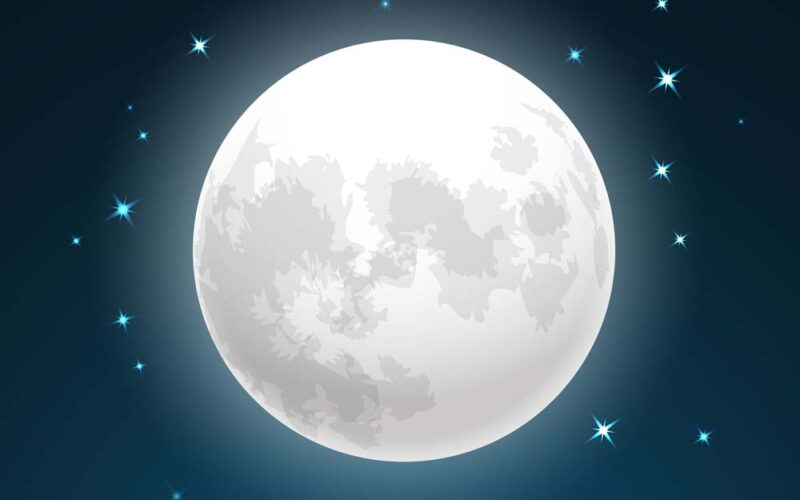What is the moon and how did the moon form?
The moon has long been a symbolic object for humans in many ways. In some areas, the moon was revered as a god, and in others, it was considered an ominous sign. In fact, the moon is a natural satellite orbiting the earth and the brightest celestial body in the night sky. Although the moon is a satellite, it is larger than Pluto, a dwarf planet in the solar system. How was the moon formed and how has it circled around the Earth for a long time? Researchers have argued four main theories about the formation of the moon. The first is the capture hypothesis. It states that the moon was a celestial body floating in the solar system and was caught by Earth’s gravity as it passed near the Earth. The second hypothesis is that the moon was created with the earth. It claims that many of the materials that were circulating around the Earth were collected and formed. Another hypothesis suggests the separation of the moon from the Earth in the early days of its birth. It hypothesizes that the early Earth’s rotation speed was so fast that materials separated from the Earth were collected and formed. Finally, there is the giant-impact theory, which is now considered the most credible. It claims that the formation of the moon was caused by a collision between the Earth and other planets. The debris formed by the collision settled in Earth’s orbit and gathered together to form the moon.
If the moon disappeared, what could happen to the Earth?
Not only does the moon brighten the Earth’s night sky, but it is also doing really important things for the Earth. What could happen to the Earth if the moon disappeared overnight?
- First of all, most of the tidal activity in the sea would disappear. Tides produce the materials that marine ecosystems need to thrive on, which could be reduced. Thus, in the end, the marine ecosystem could be destroyed step by step, leading to mass extinction of marine life due to chain reaction. In addition, the movement of the tide helps stabilize the Earth’s climate. So, if the moon disappeared, the Earth’s climate could become extreme. (Kim and Orwig, 2018)
- Meanwhile, if the moon disappeared, it could also be fatal to land animals. Nocturnal animals usually hunt for food late at night and will have difficulty finding food without moonlight. This could lead to the extinction of certain predatory animals and even the collapse of the food chain system.
- Finally, the biggest impact of the moon’s disappearance is probably that the Earth’s seasons would disappear. The reason why seasons exist on the Earth is that the Earth is orbiting the sun in a tilted state. The reason why the Earth’s tilt does not change is that the moon’s gravity stabilizes the Earth. If the moon disappeared, the Earth’s tilt would vary greatly and could lead to extreme weather. Unpredictable and extreme weather could lead to the extinction of most living things.
If the moon came closer to the Earth, what would happen?
As explained above, if the moon disappeared, the Earth could face many serious problems. On the other hand, what could happen when the moon got closer?
First, the tide of the sea would change more dramatically. This is because the moon’s gravity on the Earth would increase if the distance got closer. It means that the terrain affected by high tide would be wider. People living on the coast would have to leave their homes, and the extremely changed tide could have a significant impact on the ecosystem around the coast. Due to extreme tides, the world map would also have to be modified.
In addition, if the moon’s gravity on Earth increased further, it would affect the earth’s crust. In particular, it could affect the temperature of magma, so seismic and volcanic activities would become more active than they are now, which could cause severe tectonic plate movement.
Finally, if the moon got closer to the Earth, the Earth’s rotation speed would increase dramatically. The days and nights would be shorter and affect human life and sleep patterns. In addition, the closer moon would light up our night more, making it harder to sleep. Living things that are difficult to adapt to these changes might lead to extinction.
Conclusion
Although the moon is the closest natural celestial body to the Earth, there are still many veiled areas. Scientists and researchers are trying to study more about the moon. Some suggest developing the moon as a space station for human space exploration. The utilization value of the moon is expected to increase further in the future.
References
Butler, C., What If the Moon Was 2x Closer to Earth? [online] www.watchmojo.com. Available at: https://www.watchmojo.com/video/id/24665 [Accessed 7 Jun. 2022].
Choi, C.Q. (2017). Moon Facts: Fun Information About the Earth’s Moon. [online] Space.com. Available at: https://www.space.com/55-earths-moon-formation-composition-and-orbit.html [Accessed 8 Jun. 2022].
Lotzof, K. (2017). How did the moon form? [online] www.nhm.ac.uk. Available at: https://www.nhm.ac.uk/discover/how-did-the-moon-form.html#:~:text=What%20is%20most%20widely%20accepted [Accessed 7 Jun. 2022].
Kim, G. and Orwig, J. (2018). What living on Earth would be like without the moon. [online] Business Insider. Available at: https://www.businessinsider.in/what-living-on-earth-would-be-like-without-the-moon/articleshow/63495034.cms [Accessed 6 Jun. 2022].
